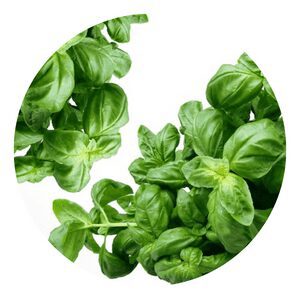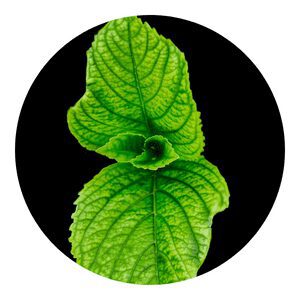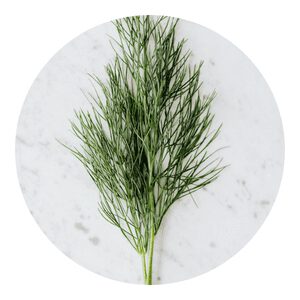How to grow organic Parsley
Parsley is a biennial herb that is native to the Mediterranean.
It is a member of the Apiaceae family, which also includes carrots, celery, and fennel.
Parsley has been used as both a food and a medicine since ancient times.
The two main types of parsley are curly parsley and Italian parsley.
Curly parsley is often used as a garnish, while Italian parsley is more commonly used in cooking.
Parsley Mene
Why eat Parsley?
Parsley is more than just a garnish. This nutrient-rich herb can be used in a variety of dishes to add flavor and nutrition.
Here are some reasons to add parsley to your diet:
Parsley is packed with vitamins and minerals, including vitamins A, C, and K, as well as folate and iron. It also contains antioxidants that can help protect against cell damage.
Parsley has anti-inflammatory properties that may help reduce the risk of chronic diseases such as heart disease, arthritis, and cancer.
Including parsley in your diet may also improve digestion and kidney function. Parsley is a good source of fiber, which can promote regularity and prevent constipation.
Additionally, the diuretic effect of parsley may help flush out toxins and excess fluids from the body.
Soil: The best soil for Parsley.
Parsley is a popular herb that is used in many dishes. It has a mild flavor and is often used as a garnish.
Parsley is very easy to grow and does not require much care.
The best soil for parsley is a light, well-drained soil.
Parsley also grows well in pots or containers.
Seeds: How to sow Parsley seeds.
Parsley is a popular herb that is used in many dishes. It has a mild flavor and can be used fresh or dried.
Parsley is easy to grow and is a great plant for beginners.
Here are some tips on how to sow parsley seeds.
To start, you will need a container that is at least 6 inches deep and has drainage holes.
Fill the container with a well-draining soil mix. Moisten the soil mix before planting the seeds.
Plant the seeds about ½ inch deep and space them about 2 inches apart.
After planting, water the seeds gently with a spray bottle.
Place the container in an area that receives indirect sunlight or filtered light.
Keep the soil moist but not wet by watering when the top of the soil feels dry to the touch.
The seeds should germinate within 7-14 days.
Watering: How often to water Parsley.
Parsley is a popular herb that is used in many dishes. It is easy to grow and does not require much water.
However, it is important to water parsley properly to ensure that it grows well.
How often should you water parsley?
The answer depends on the climate and weather conditions.
In general, parsley should be watered once a week.
However, during hot weather, it may need to be watered more frequently.
If the leaves start to wilt, it is a sign that the plant needs more water.
To ensure that your parsley plant gets enough water, check the soil before watering.
If the top inch of soil is dry, then it is time to water the plant.
Be sure to give the plant enough water so that the entire root system is moistened.
Grow organic Parsley In your garden or on your windowsill This popular herb is easy to grow And makes a wonderful addition to any meal Parsley has many health benefits It's a good source of vitamins and minerals And can help detoxify the body So why not give it a try And see for yourself how great it can be To have a little bit of Parsley in your life!
Chappy The Gardener
Organic Fertilizing: When and how to fertilize Parsley.
Parsley is a versatile herb that can be used in many dishes. It is also a good source of vitamins and minerals.
To ensure that your parsley plants get the nutrients they need, you should fertilize them regularly.
Here are some tips on when and how to organic fertilize parsley.
Parsley should be fertilized every two weeks during the growing season.
You can use compost, manure, or other organic materials as fertilizer.
Apply the fertilizer around the base of the plant, being careful not to get any on the leaves.
Water the plants thoroughly after applying fertilizer.
In late fall or early winter, you can give your parsley plants a final dose of fertilizer before they go dormant for the winter.
This will help them have a strong start in the spring.
Harvesting: When to harvest Parsley.
Parsley is a biennial herb that is typically grown as an annual. It is easy to grow and does well in most gardens.
Parsley can be harvested when the leaves are young and tender.
The best time to harvest parsley is in the morning after the dew has evaporated.
To harvest parsley, cut the stems about 2 inches above the soil line.
You can cut back parsley several times during the growing season.
Parsley can be used fresh or dried.
To dry parsley, tie the stems together and hang them upside down in a cool, dark place.
Will parsley grow back after cutting?
Parsley is a herb that is commonly used in cooking. It has a fresh, earthy flavor that can enhance the taste of many dishes.
Parsley is also relatively easy to grow, and can be grown both indoors and outdoors.
One of the main questions that people have about parsley is whether or not it will grow back after cutting.
The answer to this question is yes, parsley will grow back after cutting.
However, there are a few things that you need to do in order to ensure that your parsley plant grows back healthy and strong.
First, make sure that you cut the parsley leaves off at the stem. If you leave any leaves on the stem, it will decrease the chances of the plant growing back.
Second, water the plant well after you have cut the leaves off. This will help to encourage new growth.
What conditions does parsley grow best in?
Parsley is a popular herb that can be grown indoors or out, and it is relatively easy to care for.
Parsley does best in well-drained, moist soil, and full sun to partial shade. If you are growing parsley indoors, make sure to place it near a sunny window.
Water parsley regularly, and fertilize every few weeks with an all-purpose fertilizer.
When harvesting parsley, cut the stems back to about 2 inches above the soil line.
This will encourage new growth.
Does parsley grow better inside or outside?
Whether you’re growing parsley for its culinary or ornamental value, this herb is easy to grow successfully indoors or out.
If you live in a cold climate, though, you may have better results starting your parsley plants indoors and transplanting them outdoors once the weather warms up.
Parsley grows best in full sun but will tolerate some shade, especially in hot climates.
The soil should be rich and moist but well-drained, and the plants should be spaced 10 to 12 inches apart.
To encourage bushier growth, pinch back the main stem when the plant is about 6 inches tall.
If you start your parsley from seed, sow the seeds indoors about four weeks before your last frost date.
Sow them ¼ inch deep in seed-starting mix and keep the soil moist but not soggy.
Should I let my parsley flower?
Parsley is a popular herb that is used in many dishes for its flavorful leaves.
While you may be tempted to let your parsley flower, it is best to avoid this as it can negatively impact the flavor of the leaves.
When parsley flowers, it produces a seed that gives the plant a bitter taste.
Additionally, the plant will produce less leaves if it is allowed to flower.
If you want to enjoy fresh parsley all season long, it is best to keep your plant trimmed so that it does not flower.
Parsley - Common health benefits in herbal medicine
Parsley, an often overlooked herb,
Is packed with vitamins and minerals. Aids in digestion, can calm an upset stomach,
And is a diuretic, helping to rid the body of toxins.It’s also a good source of iron.
Therefore, it’s no surprise that herbalists have long used parsley
For its many health benefits.
Reduces the risk of developing various types of cancer
Cancer is one of the most common diseases that causes many health problems and sometimes even impossible to treat, so prevention is the best medicine.
Parsley is an excellent source of unique elements found in its oil which is actually composed of volatile oils from various chemical compounds (Limonene, Myristicin, Alpah-Thujene and Eugenol).
According to a scientific report produced by the Barbara Ann Carmanus Institute for Cancer Research, these powerful oil components help improve the immune system and prevent the formation of cancerous growths.
Parsley helps prevent carcinogens from harming our body, slows the development of tumors and relieves oxidative stress.
In addition to being attributed as a plant with anti-cancer benefits, parsley helps protect DNA from damage.
Researchers claim that eating a bunch of fresh parsley a day can stop a cell mutation and help stimulate the process of apoptosis – the deliberate death of harmful cells.
Epigenin is one of the most beneficial ingredients in parsley and has been proven by the American Cancer Society to help prevent progestin-dependent synthesis of breast cancer cells, drastically suppresses the proliferation and development of mammary gland tumors and reduces their incidence.
Prevents damage caused by free radicals and inflammation
Parsley has a large amount of flavonoid protective antioxidants, which make it a very healthy herb that is effective in preventing the development of serious diseases and infections.
Flavonoid antioxidants such as epigenin, luteolin, lycopene, alpha-carotene, beta-carotene have been shown to inhibit free radical damage and strengthen the body.
These antioxidants help slow down the aging process by fighting oxidative stress or free radical damage, along with chronic inflammation in the body.
Read about understanding and getting to know micro-nutrients and macro-nutrients
They are especially critical because the formation of free radicals is associated with almost every age-related disease, such as heart disease, cancer, eye disorders and degenerative diseases.
A study by the Institute for Food Safety and Toxicology, which included adults who ate large amounts of fresh parsley, showed that these adults experienced a large improvement in reducing oxidative stress levels, in contrast to people who did not eat parsley at all.
Prior to the start of the study, participants were asked to eat a diet without natural sources of antioxidants.
During the experiment, the scientists found that when participants ate a low-antioxidant diet, their oxygen stress levels rose.
During the second half of the study after they started consuming parsley, oxygen stress levels dropped.
Prevention of inflammation of the gallbladder and urinary tract and the formation of kidney stones
Parsley helps fight bladder and kidney inflammation, urinary retention and stone formation.
Research has shown that when people suffer from sexually transmitted diseases and jaundice, the leaves and roots of parsley are good for spleen and liver function.
Consumption of parsley can also help relieve edema, while other medications may not always help with the problem.
Fresh parsley juice helps soothe and treat blood vessels, especially the arteries and capillaries.
Parsley is also known for its ability to store mucous material and expel aqueous toxins, relieving enlarged and swollen glands.
Researchers recommend drinking a cup or two cups of parsley tea a day to help the body fully cleanse, prevent edema and bladder problems, and even to fight kidney stones.
If you have an infection, brew strong cups of parsley tea and drink them slowly throughout the day. If there are kidney stones, it is recommended to drink half a cup of tea every hour.
On the same subject: Kidney stones: signs, causes and treatments
Parsley helps maintain a healthy digestive system
Today, the foods we eat during the day can significantly affect the health of our digestive system.
Fruits and vegetables sold in the supermarket can also cause digestive problems.
Many studies have shown that organic parsley can improve digestive health.
According to a study by the American University of Beirut, organic parsley acts as a natural diuretic and thus helps relieve the pain of water retention and relieve or prevent swelling.
Consumption of parsley helps regulate the activation of urine production by the kidneys and prevent the accumulation of water in the stomach.
In addition parsley can relieve discomfort and prevent upset stomach. But it is important to consume moderately, a high amount of parsley can lead to diarrhea or nausea.
Parsley essential oil is also used to treat a wide range of gastrointestinal disorders and other problems including constipation, gas, bloating, nausea and indigestion.
According to the world-famous methods of Ayurveda, eating parsley regularly improves digestion as parsley oil tends to help promote bile production along with beneficial gastric juices, which are essential for the function of healthy enzymes.
The functions of these enzymes are involved in the good absorption of nutrients. You can add a few drops of parsley essential oil to the bath, as well as dilute and rub it on the abdominal area for quick relief.
Prevention of infections and bacteria
Parsley is good for dental and skin health due to its strong anti-fungal and antibacterial properties.
Parsley essential oil is recognized as an effective antifungal treatment. Furthermore, it cleanses skin blemishes caused by bacteria.
The microbial properties of parsley make it one of the main ingredients in cleaning products, soaps, perfumes and many other hygiene products.
Parsley essential oil has a strong ability to fight odors and bacteria, including bacteria and odors from the mouth.
Parsley has been used as a natural breath freshener for centuries because it helps fight bacteria.
Parsley essential oil is strong although it can cause local burning or bad skin reaction if not used properly.
Avoid applying it directly on the skin, without mixing it with almond, olive or coconut oil, to avoid harmful reactions.
Strengthens the immune system
As mentioned above, parsley contains 160% of the recommended daily intake of vitamin C. Thanks to the rich levels of immune antioxidants, including vitamin A and vitamin C, eating parsley helps reduce the risk of colds and flu.
Vitamin C helps support a healthy gut environment, the environment in which the immune system is located.
The high levels of vitamin C found in fresh parsley lower the levels of chronic inflammation and prevent the development of diseases such as atherosclerosis, colon cancer, arthritis, asthma and diabetes.
Plant information:
Conditions for Organic Parsley:
Damp and drained soil
How to get parsley for organic growing:
Seeds, seedlings
Disadvantages of growing parsley:
Slow and problematic growth from seeds, cheaper to buy in the store
Irrigation conditions in parsley:
Medium watering ++
Light conditions in optimal condition for growing parsley:
Full sun
Recommended date for planting parsley:
Spring, autumn
Pests of the parsley plant:
Undrained soil
Is it worth buying a complex strain of parsley:
No
Pruning date for parsley:
When necessary
Pruning for Parsley:
When the leaves are infected or mature
Parsley plant size:
10-30 cm
Growth rate in parsley:
Medium growth
Parsley can be grown in pirate agriculture:
Yes
You can also grow parsley in a pot:
Yes
Flowering plant:
Date of flowering for parsley:
About two years after sowing
Parsley pollination is carried out by:
Bees, beetles
General information about the parsley flower:
Small white flowers that grow in clusters on flowering stems
Dilution of parsley blooms:
It is recommended to dilute the flowering stems because all the energy goes to the flowering and not to the leaves and inhibits the aging of the plant
Plant varieties:
Curly Parsley – Green leaves that have a similar shape to curly hair
Seamless Parsley – Smooth leaves, similar to celery leaves
Seed growth:
Sowing of parsley:
The seeds should be soaked for about 24 hours in warm water, after which it is recommended to plant them on al-Bad, which gives them high humidity and increases the chances of germination.
Preserving parsley seeds until sowing:
A cool, dry place
Date of sowing of parsley:
In spring and autumn
Sowing distance in parsley:
8-15 cm
Depth of parsley sowing:
0.5 cm
Conditions for sowing parsley:
High humidity
Watering parsley seeds:
multi
Germination time for parsley:
1-3 months
Conditions of Parsley Germination?
High humidity, full sun
Edible leaves:
Date of picking parsley leaves:
About 3-4 weeks after germination
Proper pruning of leaves in parsley:
Depending on the amount of leaves on the plant, if there are few leaves left on the plant, it is advisable to leave the stems so that they can continue to perform photosynthesis.
Information about parsley leaves:
Dark green leaves, serrated at the edges and with stems, also edible.
Use of parsley leaves:
Spice, salad, cooking
Edible roots:
Parsley root information:
White root with an asymmetrical shape
Date of removal of the root from the soil in parsley:
At the beginning of removing the flowering stem, the roots can be removed for eating
Use of the roots of the plant Parsley:
Cooking
In conclusion,growing organic parsley is a great way to add flavor to your dishes while also supporting your local farmers.
Make sure to buy from a reputable source and wash your parsley before using it in your next meal.
Helps Us Grow – Share If You Like


















